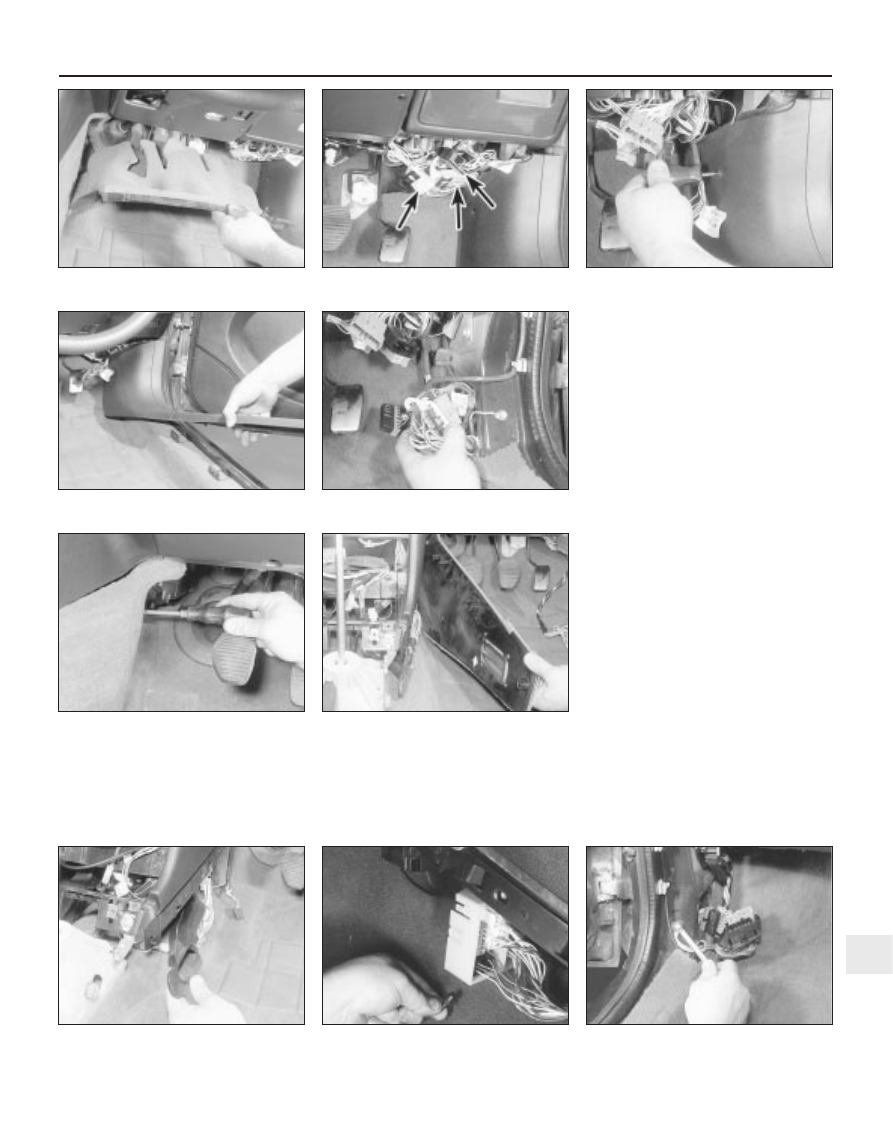Peugeot 405 Haynes (petrol). Manual - part 28

three wiring connectors (see illustrations).
Where applicable, release the wiring
harnesses from the clips on the facia.
42 Remove the securing screw, then pull up
the driver’s footwell side trim panel to release
the securing clips. Remove the panel, to
expose the wiring connector bracket (see
illustrations).
43 Release the two securing clips, and pull
the wiring connector bracket from the
footwell. Disconnect the connectors from the
bracket (see illustration).
44 Where applicable (if the earth cable
connects to the facia wiring harness), unbolt
the earth cable from the footwell, then release
the wiring harness from the clips under the
facia.
45 Working at the centre of the facia, remove
the securing screws, and withdraw the facia
centre side trim panels, to expose the heater
air ducts (see illustrations).
46 Where applicable remove the screws, and
withdraw the air ducts (see illustration).
47 Cut the cable-tie securing the wiring
harness to the bracket at the centre of the
driver’s side facia.
48 Release the plastic clips securing the
large connector block to the bracket on the
driver’s side of the centre facia, then release
the connectors from the connector block, and
separate the two halves of each connector
(see illustration).
49 Similarly, working at the passenger’s side
of the centre facia, remove the plastic clips
securing the connector block to the bracket
on the floor and to the heater assembly.
50 Working in the passenger’s footwell,
release the securing clips, and remove the
carpet trim panel from under the facia.
51 Remove the securing screw, then pull up
the passenger’s footwell side trim panel to
release the securing clips. Remove the panel,
to expose the wiring connector block. Release
the connector block from the footwell, and
separate the two halves of each wiring
connector.
52 Unbolt the earth lead from the passenger
footwell, then release the wiring harnesses
from any clips in the footwell (see illustration).
Bodywork and fittings 11•23
30.42a Remove the securing screw . . .
30.45a Remove the securing screws . . .
30.43 Pull the connector bracket
from the footwell
30.42b . . . then remove the footwell
side trim panel
30.41b . . . then disconnect the three
wiring connectors (arrowed)
30.41a Remove the carpet trim panel . . .
11
30.45b . . . and withdraw the facia centre
side trim panels
30.46 Withdrawing an air duct
30.48 Release the connector block from
the bracket on the driver’s side of the facia
30.52 Unbolt the earth lead from the
passenger’s footwell